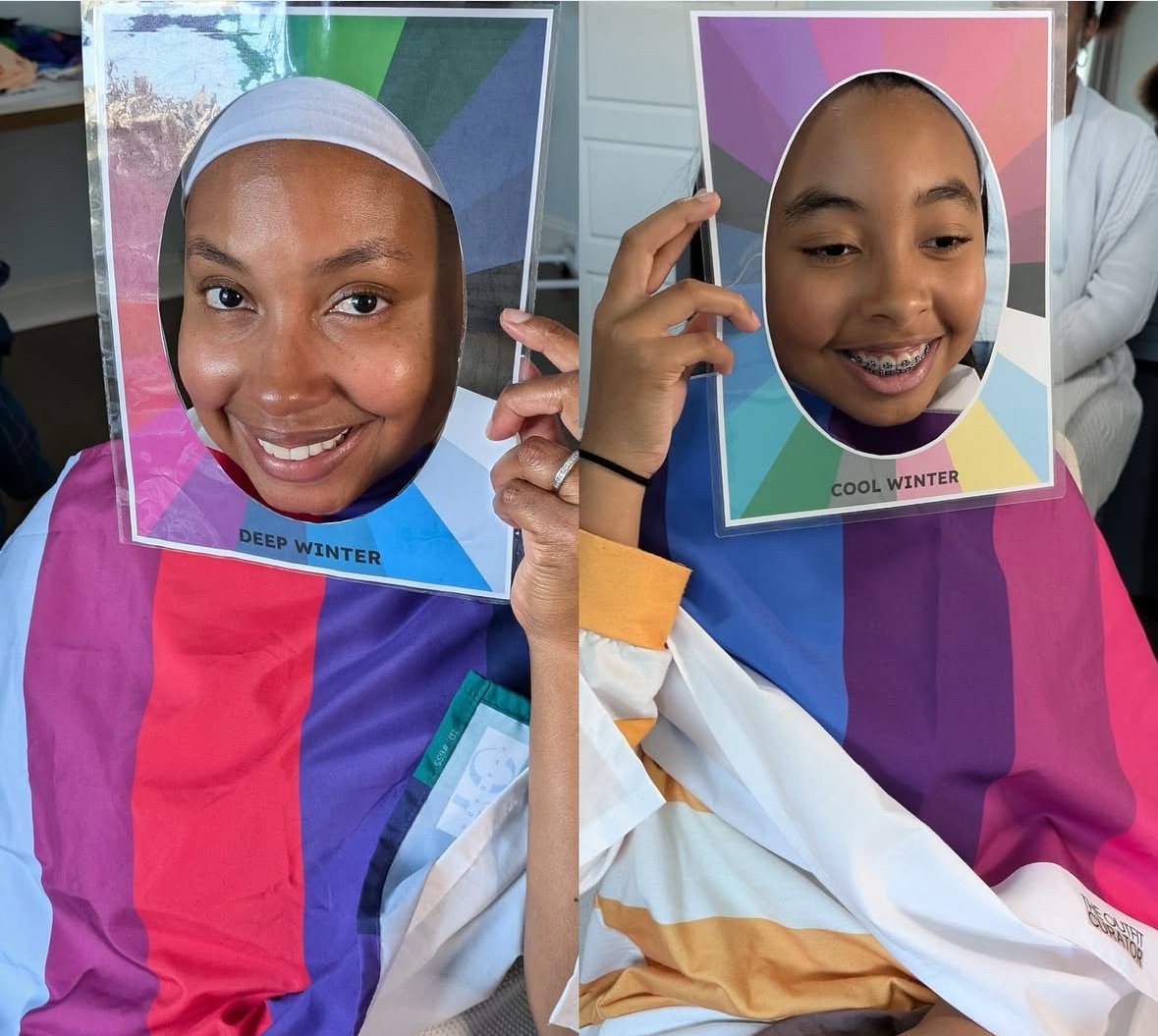 Image 1 of 2
Image 1 of 2

 Image 2 of 2
Image 2 of 2



Color Analysis Gift Certificate
Gift Certificate for 1 Color Analysis
Color analysis, often referred to as seasonal color analysis, is a process used to determine which colors complement an individual's natural coloring. This includes their skin tone, hair color, and eye color. The goal is to identify a palette of colors that enhances a person's appearance, making them look more vibrant and healthy.
Key Components of Color Analysis:
Skin Tone:
Undertones: Identifying if the undertone is warm, cool, or neutral.
Complexion: Light, medium, or deep shades can influence color choices.
Hair Color:
Assessing the natural hair color and any highlights or tones.
Eye Color:
Considering the depth and hue of the eyes, which can influence color choices.
Seasonal Palette:
Colors are typically categorized into four seasons (Spring, Summer, Autumn, Winter), each associated with a specific set of colors:
Spring: Bright, warm colors.
Summer: Soft, cool colors.
Autumn: Earthy, warm colors.
Winter: Bold, cool colors.
Personal Preferences:
Taking into account individual likes and dislikes can make the analysis more personalized.
Methods Used:
Draping: Using fabric swatches in various colors to see which ones enhance the person's features.
Digital Analysis: Some modern techniques involve digital tools that analyze colors based on photos.
Overall, color analysis can be a fun and insightful way to help individuals choose clothing, makeup, and accessories that make them look and feel their best!
Gift Certificate for 1 Color Analysis
Color analysis, often referred to as seasonal color analysis, is a process used to determine which colors complement an individual's natural coloring. This includes their skin tone, hair color, and eye color. The goal is to identify a palette of colors that enhances a person's appearance, making them look more vibrant and healthy.
Key Components of Color Analysis:
Skin Tone:
Undertones: Identifying if the undertone is warm, cool, or neutral.
Complexion: Light, medium, or deep shades can influence color choices.
Hair Color:
Assessing the natural hair color and any highlights or tones.
Eye Color:
Considering the depth and hue of the eyes, which can influence color choices.
Seasonal Palette:
Colors are typically categorized into four seasons (Spring, Summer, Autumn, Winter), each associated with a specific set of colors:
Spring: Bright, warm colors.
Summer: Soft, cool colors.
Autumn: Earthy, warm colors.
Winter: Bold, cool colors.
Personal Preferences:
Taking into account individual likes and dislikes can make the analysis more personalized.
Methods Used:
Draping: Using fabric swatches in various colors to see which ones enhance the person's features.
Digital Analysis: Some modern techniques involve digital tools that analyze colors based on photos.
Overall, color analysis can be a fun and insightful way to help individuals choose clothing, makeup, and accessories that make them look and feel their best!
Gift Certificate for 1 Color Analysis
Color analysis, often referred to as seasonal color analysis, is a process used to determine which colors complement an individual's natural coloring. This includes their skin tone, hair color, and eye color. The goal is to identify a palette of colors that enhances a person's appearance, making them look more vibrant and healthy.
Key Components of Color Analysis:
Skin Tone:
Undertones: Identifying if the undertone is warm, cool, or neutral.
Complexion: Light, medium, or deep shades can influence color choices.
Hair Color:
Assessing the natural hair color and any highlights or tones.
Eye Color:
Considering the depth and hue of the eyes, which can influence color choices.
Seasonal Palette:
Colors are typically categorized into four seasons (Spring, Summer, Autumn, Winter), each associated with a specific set of colors:
Spring: Bright, warm colors.
Summer: Soft, cool colors.
Autumn: Earthy, warm colors.
Winter: Bold, cool colors.
Personal Preferences:
Taking into account individual likes and dislikes can make the analysis more personalized.
Methods Used:
Draping: Using fabric swatches in various colors to see which ones enhance the person's features.
Digital Analysis: Some modern techniques involve digital tools that analyze colors based on photos.
Overall, color analysis can be a fun and insightful way to help individuals choose clothing, makeup, and accessories that make them look and feel their best!


